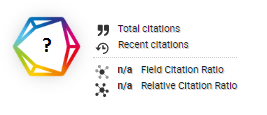SYSTEMATIC LITERATURE REVIEW TERHADAP KONSEP OPTIMAL TAX
DOI:
https://doi.org/10.46984/sebatik.v27i1.2241Keywords:
Pajak Optimal, Kesejahteraan Sosial, Kebijakan Pajak, Tarif Pajak, Administrasi PajakAbstract
Perpajakan merupakan topik yang menarik untuk diteliti baik secara teoritis maupun empiris, karena dalam kehidupan nyata, pengumpulan pajak menjadi perhatian analitis para ilmuwan. Penerimaan pajak adalah sumber utama pendanaan untuk anggaran publik. Penerimaan pajak juga harus mengedepankan asas redistribusi yang berkontribusi untuk mengurangi ketidakseimbangan dalam masyarakat. Sebagian besar pemerintahan yang modern menerapkan kebijakan fiskal redistributif, dimana penghasilan orang kaya dikenakan pajak dengan tarif yang tinggi, sehingga orang miskin dapat merasakan redistribusi pendapatan. Salah satu sistem pajak yang dapat memenuhi kebijakan fiskal redistributif adalah pajak optimal. Pajak optimal banyak didiskusikan dan dikaitkan dengan konteks kesejahteraan sosial dan redistribusi pendapatan. Namun, beberapa literatur mendefinisikan pajak optimal yang dikaitkan dengan konteks yang berbeda-beda, seperti pajak Pigouvian dan pajak lump-sum. Tujuan penelitian ini adalah untuk mempertegas definisi dari pajak optimal. Pajak optimal banyak dibahas oleh literatur yang beragam dengan penjelasan yang bervariasi. Metode penelitian yang digunakan peneliti adalah tinjauan pustaka sistematis yang didukung oleh pendekatan PRISMA sebagai strategi pelaporan dan NVivo untuk mengolah data kualitatif. Temuan dalam penelitian ini menghasilkan definisi dan konsep dari pajak optimal. Selain itu, hasil temuan penelitian dari konsep pajak optimal yang dikaitkan dengan konteks Pajak Penghasilan, pajak konsumsi, biaya administrasi, tarif pajak, asas perpajakan, isu lingkungan, kurva distribusi Pareto, dan kurva Laffer.
References
Apostu, S.-A., Mihai, M., Vasile, V., Tureatca, M.-V., & Sava, V. (2019). Economic freedom in Europe. Proceedings of the International Conference on Applied Statistics, 1(1), 76–88. https://doi.org/10.2478/icas-2019-0007
Azlan Annuar, H., Isa, K., Ibrahim, S. A., & Solarin, S. A. (2018). Malaysian corporate tax rate and revenue: the application of Ibn Khaldun tax theory. ISRA International Journal of Islamic Finance, 10(2), 251–262. https://doi.org/10.1108/IJIF-07-2017-0011
Bakiş, O., Kaymak, B., & Poschke, M. (2015). Transitional dynamics and the optimal progressivity of income redistribution. Review of Economic Dynamics, 18(3), 679–693. https://doi.org/10.1016/j.red.2014.08.004
Barbu, L., Mihaiu, D. M., Șerban, R.-A., & Opreana, A. (2022). Knowledge Mapping of Optimal Taxation Studies: A Bibliometric Analysis and Network Visualization. Sustainability, 14(2), 1043. https://doi.org/10.3390/su14021043
Bargain, O., Dolls, M., Neumann, D., Peichl, A., & Siegloch, S. (2021). Tax-Benefit Systems in Europe and the US: Between Equity and Efficiency. SSRN Electronic Journal. https://doi.org/10.2139/ssrn.1903677
Blandin, A., & Peterman, W. B. (2019). Taxing capital? The importance of how human capital is accumulated. European Economic Review, 119, 482–508. https://doi.org/10.1016/j.euroecorev.2019.08.007
Borri, N., & Reichlin, P. (2021). Optimal taxation with home ownership and wealth inequality. Review of Economic Dynamics, 40, 64–84. https://doi.org/10.1016/j.red.2020.09.003
Brancaccio, G., Kalouptsidi, M., Papageorgiou, T., & Rosaia, N. (2020). Search Frictions and Efficiency in Decentralized Transportation Markets. SSRN Electronic Journal. https://doi.org/10.2139/ssrn.3621805
Brock, W. A., Engstrom, G., Xepapadeas, A., Engström, G., & Xepapadeas, A. (2012). Spatial climate-economic models in the design of optimal climate policies across locations. SSRN Electronic Journal, 69, 78–103. https://doi.org/10.1016/j.euroecorev.2013.02.008
Castanheira, M., Nicodeme, G., & Profeta, P. (2021). On the Political Economics of Tax Reforms. SSRN Electronic Journal. https://doi.org/10.2139/ssrn.1904828
DeCicca, P., Kenkel, D., & Liu, F. (2013). Excise tax avoidance: The case of state cigarette taxes. Journal of Health Economics, 32(6), 1130–1141. https://doi.org/10.1016/j.jhealeco.2013.08.005
Dobrovič, J., Rajnoha, R., & Korauš, A. (2018). Effectiveness and performance of tax system in Slovak Republic in terms of its key non-macroeconomics factors. Oeconomia Copernicana, 9(4), 617–634. https://doi.org/10.24136/oc.2018.030
Dove, J. A., & Sutter, D. (2018). Is There a Tradeoff Between Economic Development Incentives and Economic Freedom? Evidence from the US States. Review of Regional Studies, 48(1), 55–69. https://doi.org/10.52324/001c.8006
Escobar-Posada, R. A., & Monteiro, G. (2017). Optimal tax policy in the presence of productive, consumption, and leisure externalities. Economics Letters, 152, 62–65. https://doi.org/10.1016/j.econlet.2016.12.033
Fabre, A. (2018). French Favored Redistributions Derived From Surveys: A Political Assessment of Optimal Tax Theory. SSRN Electronic Journal. https://doi.org/10.2139/ssrn.3292505
Gayle, G.-L., & Shephard, A. (2016). Optimal Taxation, Marriage, Home Production, and Family Labor Supply. Federal Reserve Bank of St. Louis, Working Papers, 2016(010). https://doi.org/10.20955/wp.2016.010
Gerritsen, A. (2016). Optimal Nonlinear Taxation: The Dual Approach. SSRN Electronic Journal. https://doi.org/10.2139/ssrn.2726545
Griffith, R., O’Connell, M., & Smith, K. (2019). Tax design in the alcohol market. Journal of Public Economics, 172, 20–35. https://doi.org/10.1016/j.jpubeco.2018.12.005
Gupta, S., Chakraborty, B., & Banerjee, T. (2019). Optimal tax policy in an endogenous growth model with a consumable service good. Economic Annals, 64(220), 117–150. https://doi.org/10.2298/EKA1920117G
Hange, U. (2021). Tax Competition, Elastic Labor Supply, and Growth. SSRN Electronic Journal. https://doi.org/10.2139/ssrn.1156278
Henry de Frahan, L., & Maniquet, F. (2021). Preference responsibility versus poverty reduction in the taxation of labor incomes. Journal of Public Economics, 197, 104386. https://doi.org/10.1016/j.jpubeco.2021.104386
Huang, J., & Rios, J. (2016). Optimal tax mix with income tax non-compliance. Journal of Public Economics, 144, 52–63. https://doi.org/10.1016/j.jpubeco.2016.10.001
Hummel, A. J. (2021). Unemployment and Tax Design. SSRN Electronic Journal. https://doi.org/10.2139/ssrn.3885420
Hummel, A. J., & Jacobs, B. (2018). Optimal Income Taxation in Unionized Labor Markets. SSRN Electronic Journal. https://doi.org/10.2139/ssrn.3228657
Jacobs, B. (2021). The Marginal Cost of Public Funds is One. SSRN Electronic Journal. https://doi.org/10.2139/ssrn.1711121
Jacobs, B., & de Mooij, R. A. (2015). Pigou meets Mirrlees: On the irrelevance of tax distortions for the second-best Pigouvian tax. Journal of Environmental Economics and Management, 71, 90–108. https://doi.org/10.1016/j.jeem.2015.01.003
Jacobs, B., & Rusu, A. V. (2017). Why Is the Long-Run Tax on Capital Income Zero? Explaining the Chamley-Judd Result. SSRN Electronic Journal. https://doi.org/10.2139/ssrn.2903830
Jaqua, D., & Schaffa, D. (2022). The case for subsidizing harm: constrained and costly Pigouvian taxation with multiple externalities. International Tax and Public Finance, 29(2), 408–442. https://doi.org/10.1007/s10797-021-09670-5
Kanbur, R., Paukkeri, T., Pirttilä, J., & Tuomala, M. (2018). Optimal taxation and public provision for poverty reduction. International Tax and Public Finance, 25(1), 64–98. https://doi.org/10.1007/s10797-017-9443-6
Karabarbounis, M. (2015). A Road Map for Efficiently Taxing Heterogeneous Agents. SSRN Electronic Journal. https://doi.org/10.2139/ssrn.2754368
Komura, M., Ogawa, H., & Ogawa, Y. (2019). Optimal income taxation when couples have endogenous bargaining power. Economic Modelling, 83(November 2018), 384–393. https://doi.org/10.1016/j.econmod.2019.09.021
Laczó, S., & Rossi, R. (2020). Time-consistent consumption taxation. Journal of Monetary Economics, 114, 194–220. https://doi.org/10.1016/j.jmoneco.2019.03.005
Langot, F., & Lemoine, M. (2017). Strategic fiscal policies in Europe: Why does the labour wedge matter? European Economic Review, 91(December 2014), 15–29. https://doi.org/10.1016/j.euroecorev.2016.09.005
Li, X., Narajabad, B. N., & Temzelides, T. (2015). Robust Dynamic Optimal Taxation and Environmental Externalities. Paper Knowledge . Toward a Media History of Documents, 3(April), 49–58.
Lisi, G. (2015). Tax morale, tax compliance and the optimal tax policy. Economic Analysis and Policy, 45, 27–32. https://doi.org/10.1016/j.eap.2014.12.004
Lockwood, B. B., & Weinzierl, M. (2014). De Gustibus Non Est Taxandum: Heterogeneity in Preferences and Optimal Redistribution. SSRN Electronic Journal. https://doi.org/10.2139/ssrn.2500896
Long, X., & Pelloni, A. (2017). Factor income taxation in a horizontal innovation model. Journal of Public Economics, 154, 137–160. https://doi.org/10.1016/j.jpubeco.2017.06.008
Lu, C.-H. (2015). Fiscal policies, frictional labor market, and endogenous growth. Journal of Macroeconomics, 46, 315–327. https://doi.org/10.1016/j.jmacro.2015.10.006
Małecka-Ziembińska, E., & Ziembiński, R. (2020). Application of Genetic Algorithm to Optimal Income Taxation. Journal of Risk and Financial Management, 13(11), 251. https://doi.org/10.3390/jrfm13110251
Martín-Herrán, G., & Rubio, S. J. (2018). Second-best taxation for a polluting monopoly with abatement investment. Energy Economics, 73, 178–193. https://doi.org/10.1016/j.eneco.2018.05.019
Neisser, C. (2021). The Elasticity of Taxable Income: A Meta-Regression Analysis. SSRN Electronic Journal, 17. https://doi.org/10.2139/ssrn.3301710
Okoli, C. (2015). A guide to conducting a standalone systematic literature review. Communications of the Association for Information Systems, 37(1), 879–910. https://doi.org/10.17705/1cais.03743
Olovsson, C. (2015). Optimal taxation with home production. Journal of Monetary Economics, 70, 39–50. https://doi.org/10.1016/j.jmoneco.2014.08.004
Peterman, W. (2012). Determining the Motives for a Positive Optimal Tax on Capital. SSRN Electronic Journal. https://doi.org/10.2139/ssrn.1969436
Petticrew, R. (2008). Systematic Reviews in the Social Sciences. Systematic Reviews in the Social Sciences, 42(5), 1032–1034.
Piketty, T., & Saez, E. (2013). Top incomes and the great recession: Recent evolutions and policy implications. IMF Economic Review, 61(3), 456–478. https://doi.org/10.1057/imfer.2013.14
PRISMA-Statement. (2023). PRISMA: Transparent Reporting of Systematic Reviews and Meta-Analyses. Prisma-Statement.Org. https://www.prisma-statement.org/
Rawi, Y. A. A. L., Imlus, M. H., Yusup, Y., & Yahya, S. Bin. (2018). The Optimal Progressive Tax Policy to Reduced Vehicles Externalities. Journal of Asian Scientific Research, 8(8), 265–276. https://doi.org/10.18488/journal.2.2018.88.265.276
Reid, L. J. (2016). Has a High Value Added Tax Harmed the European Economy. SSRN Electronic Journal. https://doi.org/10.2139/ssrn.2822998
Renes, S., & Zoutman, F. (2021). As Easy as ABC? Multidimensional Screening in Public Finance. SSRN Electronic Journal. https://doi.org/10.2139/ssrn.2918716
Rothert, J. (2021). Strategic inefficiencies and federal redistribution during uncoordinated response to pandemic waves. European Journal of Political Economy, 69(2019), 102003. https://doi.org/10.1016/j.ejpoleco.2021.102003
Rothschild, C., & Scheuer, F. (2021). A Theory of Income Taxation Under Multidimensional Skill Heterogeneity. SSRN Electronic Journal. https://doi.org/10.2139/ssrn.2560702
Sepulveda, C. F. (2018). A Note on Time Discretion and the Welfare Cost of Lump-Sum Taxation. Theoretical Economics Letters, 08(02), 177–181. https://doi.org/10.4236/tel.2018.82013
Seto, T. P. (2017). Does the Income Tax Cause Parents to Spend Too Much Time with Their Children?: Rethinking Mirrlees. SSRN Electronic Journal. https://doi.org/10.2139/ssrn.2926016
Simonovits, A. (2013). Does higher tax morale imply higher optimal labor income tax rate? Danube, 2013(2), 97–114. https://doi.org/10.2478/danb-2013-0005
Slemrod, J. B. (2015). Tax Administration and Tax Systems. SSRN Electronic Journal. https://doi.org/10.2139/ssrn.2958808
Slemrod, J., & Gillitzer, C. (2014). Insights From a Tax-Systems Perspective. CESifo Economic Studies, 1206, 1–38. http://ssrn.com/abstract=2340048
Weisbach, D. A. (2014). The Use of Neutralities in International Tax Policy. 697.
Wesseh, P. K., & Lin, B. (2018). Optimal carbon taxes for China and implications for power generation, welfare, and the environment. Energy Policy, 118(March), 1–8. https://doi.org/10.1016/j.enpol.2018.03.031
Wiskich, A. (2019). Optimal climate policy with directed technical change, extensive margins and decreasing substitutability between clean and dirty energy. Centre for Applied Macroeconomic Analysis. https://doi.org/https://doi.org/10.2139/ssrn.3458735
Wu, H.-M. P., & Willett, K. D. (2016). The Taxation of Environmental Pollution: A Model for Tax Revenue-Environmental Quality Tradeoffs. International Journal of Financial Research, 8(1), 65. https://doi.org/10.5430/ijfr.v8n1p65
Zamawe, F. C. (2015). The implication of using NVivo software in qualitative data analysis: Evidence-based reflections. Malawi Medical Journal, 27(1), 13–15. https://doi.org/10.4314/mmj.v27i1.4
Zhang, W.-B. (2020). Ramsey Taxation and Public Goods in the Solow-Uzawa Growth Model. Review of Politics and Public Policy in Emerging Economies, 2(2), 25–38. https://doi.org/10.26710/rope.v2i2.1358
Downloads
Published
How to Cite
Issue
Section
License
Authors retain all their rights to the published works, such as (but not limited to) the following rights; Copyright and other proprietary rights relating to the article, such as patent rights, The right to use the substance of the article in own future works, including lectures and books, The right to reproduce the article for own purposes, The right to self-archive the article








